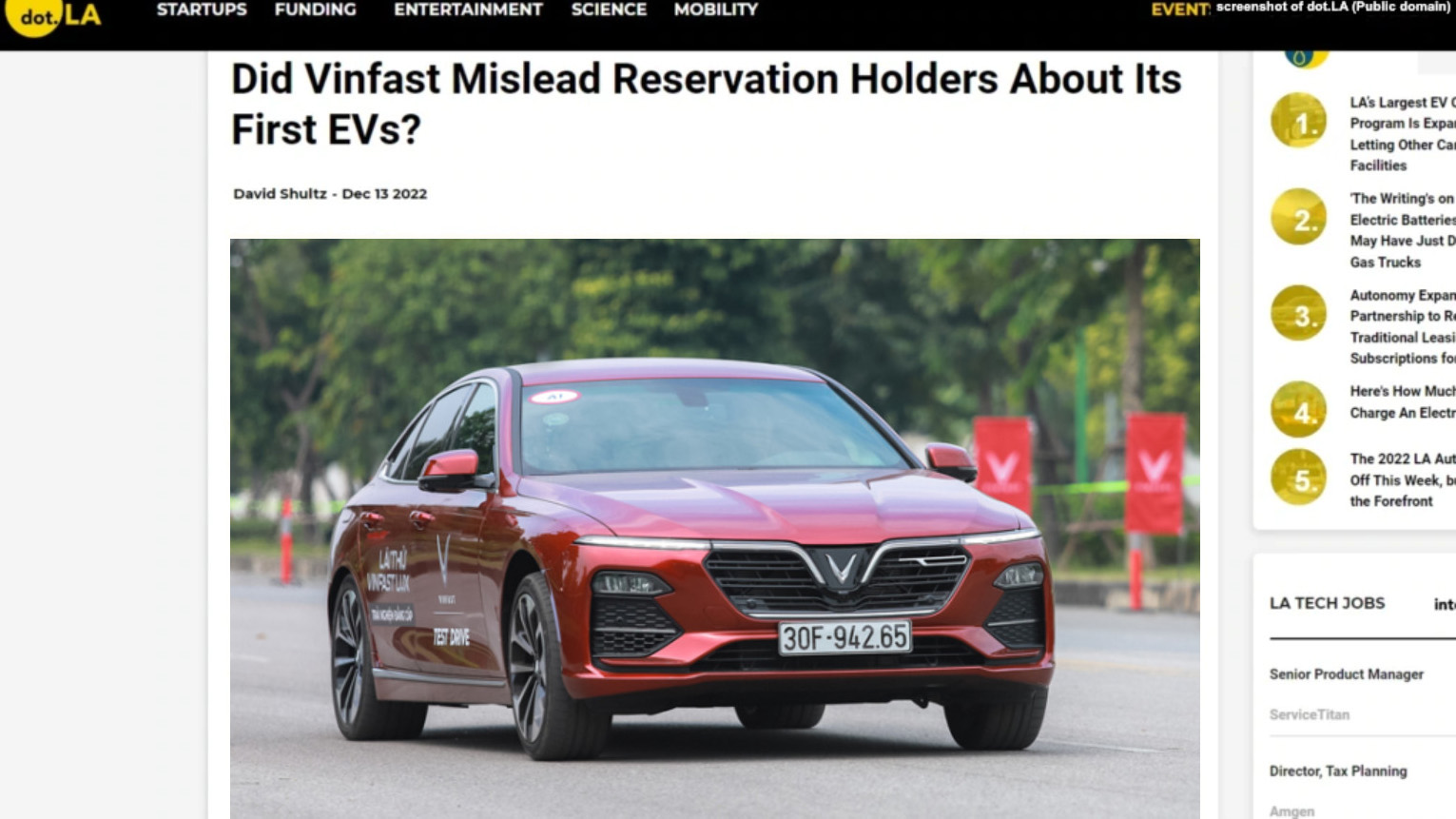
The VF8 electric car of Vietnam-based VinFast of Vingroup is considered difficult to compete in the US, according to two articles published on December 13 on MotorTrend specializing in cars and dot.LA page on technology.
The article by author David Shultz on dot.LA said that VinFast on November 25 exported its first 999 cars from Hai Phong to the US and this batch of cars will dock in California on December 15.
On November 29, VinFast sent an email to those who made a deposit to buy a car to inform that the VF8 in this initial export batch is a special City Edition, with a range of 180 miles (290 kilometers), low than the previously advertised 260-292-mile range versions, according to Shultz’s post.
Over the weekend, VinFast, which has an office in Los Angeles, confirmed via Twitter to dot.LA about the above information, and added that the standard version of the VF8 will arrive in the US in the first quarter of 2023.
This is a development that can be considered surprising because before VinFast sent an email to customers on November 29, there was almost no information about the new version City Edition, author Shultz wrote. His post on dot.LA says those VF8s cost $52,000.
On the MotorTrend page, writer Christian Seabaugh asked the question “180 miles for $55,000: Will the 2023 VinFast VF8 SUV break into the US?”
Author Seabaugh admits that he recently attended a test drive of a pre-production prototype of the VF8, a test drive held in Los Angeles. He writes that he cannot make a final assessment of the car but has to wait until more driving in the production version.
After the test drive, MotorTrend’s pen contacted VinFast’s communications department and was confirmed that the City Edition of VF8 costs $55,000 and has a range of 180 miles, while the Eco and Plus versions are still in the process of testing and licensing with the US Environmental Protection Agency (EPA).
This price is likely to be a “hard pill to swallow” for those who deposit to buy VinFast cars, journalist Seabaugh said. Even considering other versions of the VF8, there may be more range, but prices start at around $57,000 and still have to wait a few more months to get the car, still according to the author.
Both MotorTrend and dot.LA, two US-based media companies, think that with the above parameters, the VF8 will have a difficult start in the US.

Page dot.LA said that this car will be difficult to compete with other makers, difficult to convince customers in the US considering the fact that VinFast is a Vietnamese car company that is not well known and has not been tested.
For comparison, dot.LA offers a number of products from other manufacturers that have a long and established history, including the 2023 Hyundai Ioniq 5 with 220 miles, starting at $42,745, type running 303 miles costs $60,000; The entry-level Kia EV6 costs $49,795, with a range of 206 miles; or Mustang Mach E costs as low as $46,895, with 224 miles on it.
“You will be hard-pressed to find a 2023 electric car that has a lower ‘price-to-range’ ratio than VinFast’s VF8,” author Shultz wrote on dot.LA.
Still, Mr. Shultz made the observation that public reaction to this news, especially in the social network Reddit, was largely negative.
As observed by VOA, so far VinFast has not made any public statements about the two articles published by dot.LA and MotorTrend. VOA tried to contact VinFast to find out the company’s response but has not received a response.
The articles by dot.LA and MotorTrend come at a time when VinFast is waiting for a decision from the US Securities and Exchange Commission (SEC) on the company’s submission for initial public offering on Nasdaq.
VinFast’s prospectus filed with the SEC on December 6 shows that the company has total assets of more than $4.4 billion, but its total debts hit approximately $8.8 billion and has accumulated losses of up to nearly $4.5 billion.
As of September 30, 2022, its short-term debt is more than $5.3 billion, and long-term debt is nearly $3.5 billion. Its net loss year-on-year is nearly $800 million in 2020; more than 1.3 billion dollars by 2021; and more than $1.4 billion in the first nine months of 2022.
Professor, Dr. Khuong Huu Loc, a CFO and economist in Texas, USA, commented to VOA that when any company has the asset-to-debt ratio and loss as above, the company’s health is “very bad” with the liquidity risk “huge.”
Thoibao.de (Translated)




























